Top Rankings
Burlington School District ranks among the top 20% of public school district in Massachusetts for:
Category
Attribute
Diversity
Most diverse schools (Top 1%)
Community Size
Largest student body (number of students) (Top 1%)
For the 2025 school year, there is 1 public middle school serving 862 students in Burlington School District. This district's average middle testing ranking is 8/10, which is in the top 30% of public middle schools in Massachusetts.
Public Middle School in Burlington School District have an average math proficiency score of 50% (versus the Massachusetts public middle school average of 38%), and reading proficiency score of 53% (versus the 42% statewide average).
Minority enrollment is 42% of the student body (majority Asian and Hispanic), which is less than the Massachusetts public middle school average of 53% (majority Hispanic).
Overview
This School District
This State (MA)
# Schools
6 Schools
526 Schools
# Students
3,525 Students
299,731 Students
# Teachers
329 Teachers
26,316 Teachers
Student : Teacher Ratio
11:1
11:1
District Rank
Burlington School District, which is ranked within the top 30% of all 393 school districts in Massachusetts (based off of combined math and reading proficiency testing data) for the 2021-2022 school year.
The school district's graduation rate of 94% has decreased from 95% over five school years.
Overall District Rank
#121 out of 397 school districts
(Top 50%)
(Top 50%)
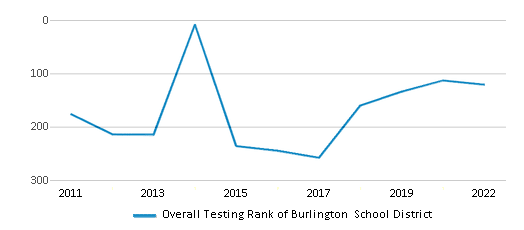
Math Test Scores (% Proficient)
52%
41%
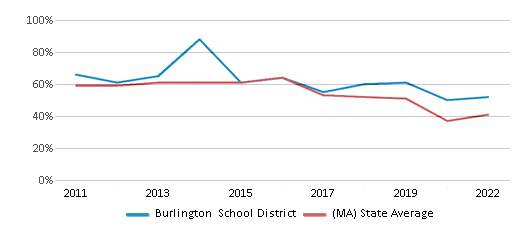
Reading/Language Arts Test Scores (% Proficient)
52%
44%
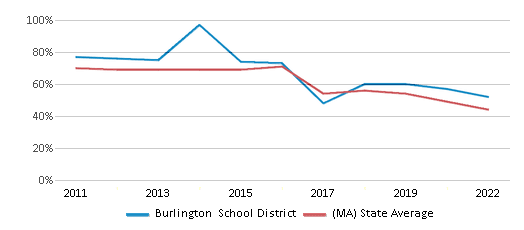
Science Test Scores (% Proficient)
53%
44%
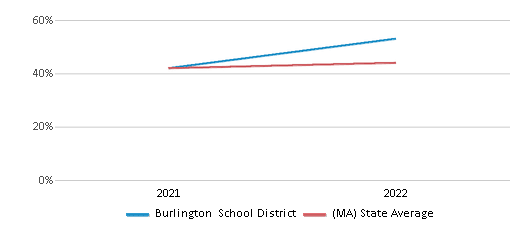
Graduation Rate
94%
90%
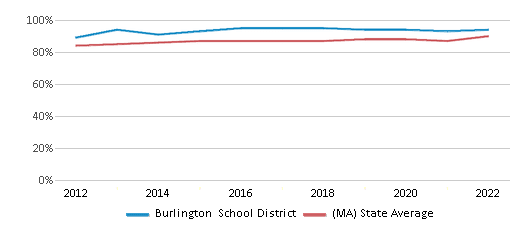
Students by Ethnicity:
Diversity Score
0.61
0.68
# American Indian Students
7 Students
816 Students
% American Indian Students
n/a
n/a
# Asian Students
629 Students
21,318 Students
% Asian Students
18%
7%
# Hispanic Students
376 Students
84,297 Students
% Hispanic Students
11%
28%
# Black Students
268 Students
37,053 Students
% Black Students
8%
12%
# White Students
2,079 Students
142,107 Students
% White Students
59%
48%
# Hawaiian Students
n/a
291 Students
% Hawaiian Students
n/a
n/a
# Two or more races Students
158 Students
13,358 Students
% of Two or more races Students
4%
5%
Students by Grade:
# Students in PK Grade:
104
2,713
# Students in K Grade:
273
7,222
# Students in 1st Grade:
264
7,530
# Students in 2nd Grade:
293
7,944
# Students in 3rd Grade:
273
8,002
# Students in 4th Grade:
279
8,676
# Students in 5th Grade:
276
19,802
# Students in 6th Grade:
282
55,437
# Students in 7th Grade:
302
68,011
# Students in 8th Grade:
278
68,221
# Students in 9th Grade:
225
11,995
# Students in 10th Grade:
227
11,729
# Students in 11th Grade:
231
11,460
# Students in 12th Grade:
218
10,610
# Ungraded Students:
-
379
District Revenue and Spending
The revenue/student of $26,622 is higher than the state median of $23,845. The school district revenue/student has stayed relatively flat over four school years.
The school district's spending/student of $26,934 is higher than the state median of $24,602. The school district spending/student has stayed relatively flat over four school years.
Total Revenue
$94 MM
$21,850 MM
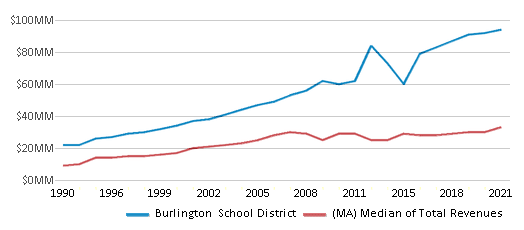
Spending
$95 MM
$22,544 MM
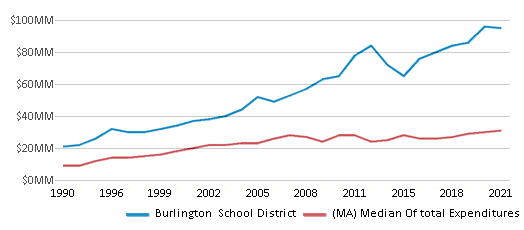
Revenue / Student
$26,622
$23,845
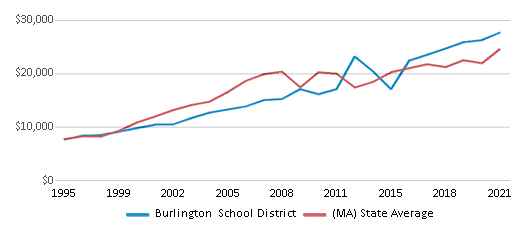
Spending / Student
$26,934
$24,602
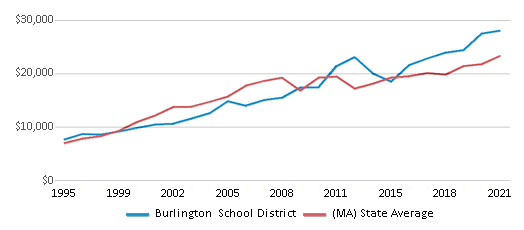
Best Burlington School District Public Middle Schools (2025)
School
(Math and Reading Proficiency)
(Math and Reading Proficiency)
Location
Grades
Students
Rank: #11.
Marshall Simonds Middle School
(Math: 50% | Reading: 53%)
Rank:
Rank:
7/
Top 50%10
114 Winn Street
Burlington, MA 01803
(781) 270-1781
Burlington, MA 01803
(781) 270-1781
Grades: 6-8
| 862 students
Recent Articles

What Is A Charter School?
Explore the world of charter schools in this comprehensive guide. Learn about their history, how they operate, and the pros and cons of this educational innovation. Discover key facts about charter schools, including admission policies, demographics, and funding, as well as what to look for when considering a charter school for your child.

10 Reasons Why High School Sports Benefit Students
Discover the 10 compelling reasons why high school sports are beneficial for students. This comprehensive article explores how athletics enhance academic performance, foster personal growth, and develop crucial life skills. From improved fitness and time management to leadership development and community representation, learn why participating in high school sports can be a game-changer for students' overall success and well-being.

February 05, 2025
Understanding the U.S. Department of Education: Structure, Impact, and EvolutionWe explore how the Department of Education shapes American education, from its cabinet-level leadership to its impact on millions of students, written for general audiences seeking clarity on this vital institution.





